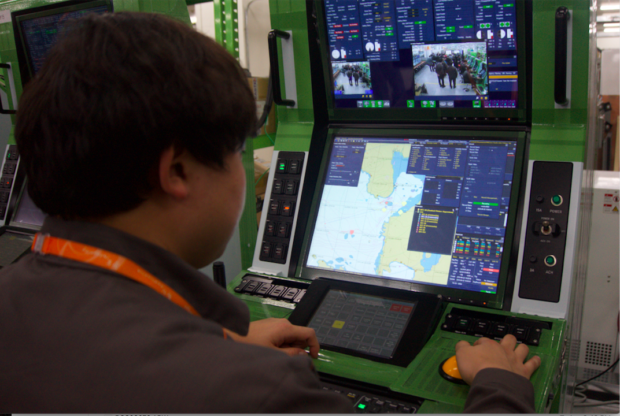LOOK: Inside the CMS test site for Philippine Navy frigates

Credit to Author: Alexander Magno| Date: Sat, 25 May 2019 12:05:06 +0000
GUMI, South Korea — Hanwha Systems, the chosen supplier of the combat management systems (CMS) for the Philippine Navy’s upcoming frigates, opened up its facilities to Philippine media recently.
The CMS is considered the “brain” of warships, which integrates its weapons, communication and navigation, and sensors systems for naval combat.
Manila-based reporters were given a chance to have a quick look at the integrated combat management systems’ test site for BRP Antonio Luna (FF-151), the second missile-capable frigate which formally started its construction this week.
The selection of the CMS for the first purposely-built missile-capable frigates of the Philippine Navy attracted public attention last year.
Then Navy chief Vice Adm. Ronald Joseph Mercado was unceremoniously relieved from his post in late December 2017 for insisting on Tacticos Thales as CMS, as the system has been branded as a proven technology and capable of data integration with other modern navies.
READ: Palace had special interest in Navy’s selection of weapons system supplier
Tacticos Thales is compatible with Tactical Data Link 16, a military data exchange network used by the navies of NATO, the United States, and other countries. Hanwha System’s Naval Shield compatibility with TDL 16 is still being developed.
Shipbuilder Hyundai Heavy Industries insisted on choosing the CMS for the Philippine ships, citing a part of the contract. While it first offered Tacticos Thales to the Philippine Navy, it later switched to Naval Shield of Hanwha System.
Critics of the HHI contract accused Malacañang of intervening in the selection of the CMS, the software-intensive system flexible enough to operate in a complex naval battle environment, prompting the Senate and the House of Representatives to investigate into the matter.
At a Senate hearing last year, Navy chief Vice Adm. Robert Empedrad said Hanwha Systems committed itself to developing the TDL 16 compatibility by 2019. But it appears that this will have to wait until next year.
Hanwha Systems senior manager of overseas business support team Sam Soo Kim told reporters on Wednesday that their standard comprehensive testing for TDL 16 with the US had been delayed to late 2020 due to change of requirements in transmission by the Korean armed forces.
According to Kim, it’s the US that conducts the final and official tests for the certification of TDL 16 compatibility.
But he said they had developed an exclusive tactical data link system called “Link P” for the two frigates of the Philippine Navy being built by HHI.
This can communicate with other similar tactical data link systems and has a 32-digit key code encryption to ensure data security.
“There is 32 digit key code for encrypting (‘Link P’) and we will give this freedom (to the PN) to change the key code. Normally the password has 10 digits. Hacking of this password takes millions of years. That’s the theory. Thirty-two digits is a very long password. Philippine Navy can randomly put in this system,” Kim said.
Empedrad said the TDL 16 compatibility for the Philippine frigates would require a different procurement activity for the government.
“TDL is not part of the contract. Wala naman nakalagay. It is provided with space but not (supplied) with. Pag binili yun, pwede agad isalpak,” he said.
(Editor: Alexander T. Magno)